Combat aircraft. Terribly beautiful and vice versa
We know who was the first to build an asymmetric aircraft. Hans Burkhard from Gotha. And this volatile absurdity from time to time excited the minds of other designers. Apparently, there was something in her, attractive. As in wine.
But Burkhard's experiments in 1918 ended with the war and there was a lull.
And in the 1930s, Dr. Richard Vogt, an employee of the then Hamburger Flyugzeugbau company, kissed the forbidden jug.
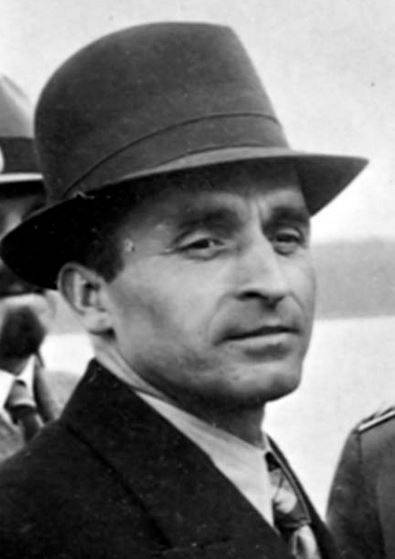
The firm entered the competition for a tactical reconnaissance aircraft for the Luftwaffe in 1935. By her own story how Dr. Vogt came to such an idea gives rise to certain considerations. However, here it is better to give the floor to Vogt himself:
The competition provided for the creation of a single-engine aircraft with the best view both forward and backward. An aircraft design that would provide the desired 25-degree (down) viewing angle forward and backward above the engine would require a very high fuselage.
As I later understood, the Luftwaffe actually needed a twin-engine (!!!) aircraft, in which the pilot and observer would be located in front. So why not create a twin-engined plane and then remove one engine from it? Thus, the idea of an asymmetric system came to my mind. "
Interesting, right? So many things ... The Luftwaffe ordered a single-engine aircraft, but Vogt understood what the leaders who had made the task "did not understand". And it began ...
If Vogt had been an amateur, or worse, an adventurer, the story would have ended there, and most likely in the Gestapo. They collected such people there, because everything would go under the article "sabotage" known to us.
But Vogt was a professional. Therefore, he was aware of the problems that such a scheme as an asymmetric design can bring. After all, even a symmetrical design has problems in terms of aerodynamics - a wagon with a platform.
It all starts from the screw in the truest sense of the word. The propeller turns the air flow and sends it back to the keel. Do you understand, yes? The propeller rotates clockwise, the air flow presses on the keel and gradually turns the aircraft to the left. It's okay, it's aerodynamics. Therefore, the keel is usually placed with a calculated bias in order to exclude this phenomenon - drift by the air flow from the propeller. Or the motor is deflected from the axis of the aircraft.
With an asymmetric design, everything is more interesting. There, the design itself, if correctly calculated, can extinguish the effect of the air flow from the propeller without any innovations and deviations.
In general, Dr. Vogt calculated everything correctly and went to Berlin with sketches. And not to anyone, but to Udet himself (Ernst Udet). General Udet then headed the technical department at the Ministry aviation Germany (the Ministry of Aviation, Reichsluftfahrtministerium, RLM), where he was in charge of the Luftwaffe.
Udet, being also a professional, studied the sketches and behaved accordingly. That is, on the one hand, he gave Vogt permission to develop an aircraft of an unconventional design, determining the year in terms of time for work. But he did not give a single pfennig from the treasury of the ministry.
Further along the knurled one. The Ministry of Aviation assigned the project number 8-141, but did not conclude a contract, that is, all expenses for the development of the aircraft fell on the company "Blom und Foss", which in 1937 included the "Hamburger Flyugzeugbau".
So the same aircraft were first produced under the brand name "Na", and then they became known as BV.
In general, "Blom und Foss" was better known in aviation as a manufacturer of flying boats. In fact, Dr. Vogt was also a specialist in flying boats. At first, he worked for the benefit of the Kawasaki company for a long time, designing flying boats for Japan, and then, moving back to Germany, built the Na.138, which went into series as the BV.138 and served in the Luftwaffe throughout the war.
Vogt had an excellent team, and therefore, three months after Udet gave the go-ahead, in June 1937 the airplane frame was ready. And at the end of February 1938, the prototype of the BV.141 aircraft made its first flight.
The first copies were assembled with air-cooled BMW 323A 1000 hp motors. from. The engine turned out to be what we needed, and already the first flights showed that the plane is frankly good, if you eliminate minor flaws.
Udet flew to Hamburg and personally tested the plane in flight. He liked the plane, and Udet spoke very well of it to Milch and Goering.
Here we must pay tribute to Vogt and his team. Correctly made calculations - and the car turned out to be very balanced and easy to operate.
Aerodynamically, everything is simple and justified, and it is even understandable why the motor is to the left of the cockpit, and not vice versa.
The propeller is to the left of the aircraft's center of gravity. The propeller pulls the plane forward and to the right, spinning the plane around the CG. And the air flow from the propeller presses on the keel and turns the aircraft to the left. And the reactive moment from the propeller acts to the left.
Vogt and company calculated everything in such a way that these moments completely balanced each other, and the plane flew in a perfect straight line, not going off course. Moreover, it did not depend on the operating mode of the motor.
The miracle did not happen immediately, Udet provided the promised support for the project, and RLM made an official order for the further development of the project and the production of a series of three prototypes.
The rich "Blom and Foss", in order to shorten the time, decided to build planes at their own expense and fly around them. So the prototype, which passed under the name Na.141-0, was renamed BV.141 V2.
And finishing work began. Home - The Ministry demanded to equip scouts not only with machine guns for shooting backwards, but also to equip firing points for shooting forward. The main competitor from "Focke-Wulf" had course machine guns, and the Ministry unobtrusively pointed out this nuance to Vogt.
Vogt and company got out of the situation simply amazingly: somewhere they got the front part of the Ju.86 bomber, which already had firing points in the nose, and attached (the word suggests itself differently) to their fuselage.
To prevent all this from falling off in flight, the structure was reinforced with two steel pipes, which began to play the role of a power support for the cabin floor. Then someone came up with just a great idea: in these pipes and place the machine guns. Well, in order not to disappear at all, the control pedals were also fixed on the pipes.
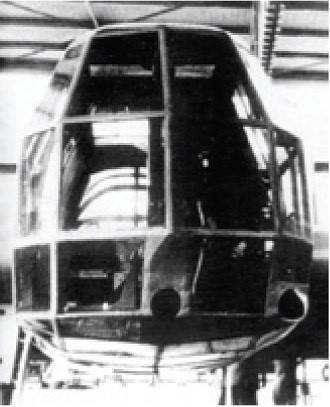
These pipes are clearly visible here.
We decided on the weapons. Two MG.17 machine guns were installed in the pipes, firing in the direction of the aircraft. A fairing with a sector was installed at the rear of the cockpit, which opened by turning. By turning part of the fairing, the stern point with the MG.15 machine gun opened.
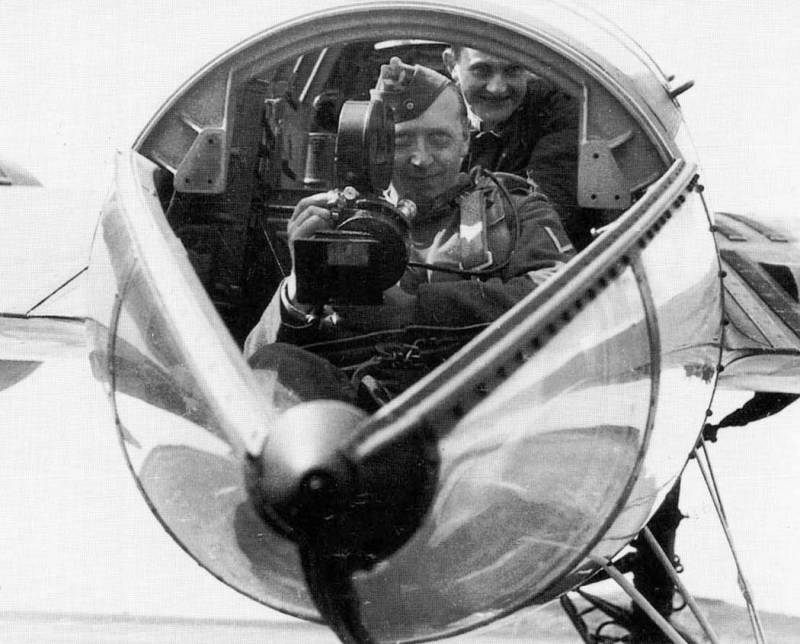
A cameraman is sitting here, but in his place there would be a shooter with a machine gun in flight.
Another machine gun of the same type was on the roof of the cockpit, on a turret with a fairing.
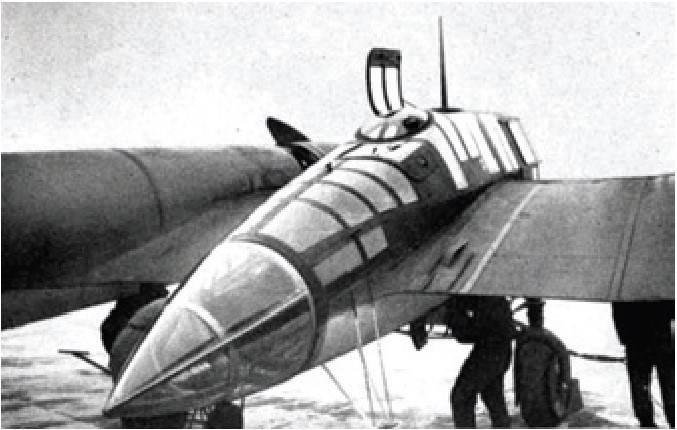
In addition to defensive armament, the aircraft could take four 50 kg bombs to the nodes under the wings.
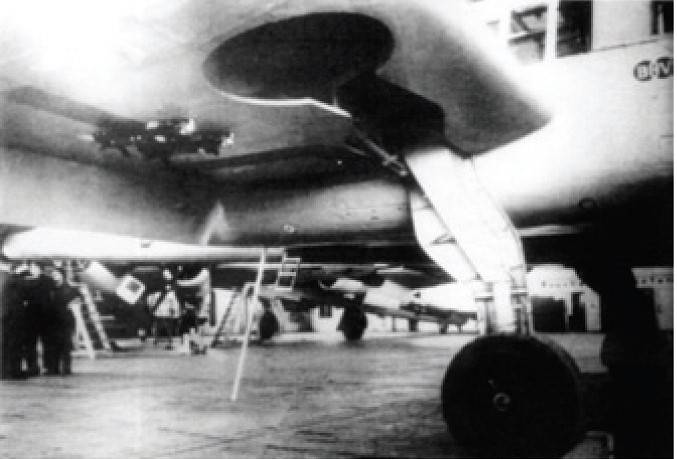
In the third prototype, BV.141V3, the design began to change. The hull was lengthened, the wingspan was increased, the motor was replaced. The BMW Bramo N132 produced only 835 hp, but was considered a more promising engine, with a perspective.
And on this model, as well as on the Henschel-129, this trick was applied: in order to reduce the area of the dashboard in the cockpit and improve visibility, the devices related to monitoring the operation of the engine were transferred to the left side of the hood and covered with a plexiglass cover. It's hard to say who stole the idea from whom, but it turned out that way.
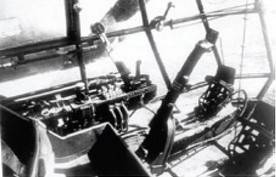
And this third prototype, with an enlarged wing and fuselage, showed the best results and was accepted as a model for mass production. The tail unit was still symmetrical, but even then Vogt realized that something would have to be done with it.
A few words about the cockpit. In general, here the imagination of the designers was played out in full. The cockpit was not very large, but it was made functional.
On the left side sat the pilot and controlled the plane. Everything. And then miracles began.
The observer sat on a chair of a special design, which rolled along the rails through the entire cabin, turned and unfolds!
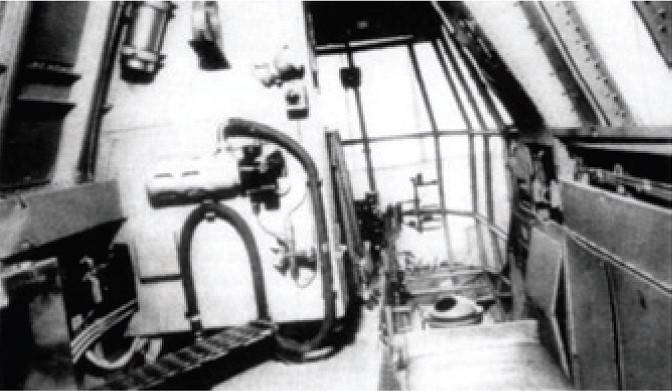
In a normal state, the observer sat and watched. If he had to open fire from the upper machine gun, then he rolled the chair back and turned it 180 degrees. Rolling halfway and turning 90 degrees clockwise, the observer found himself at the radio stations and turned into a radio operator. Turning it counterclockwise made it look like a camera operator. And if you move the chair all the way forward and unfold the chair, then in the supine position, the observer becomes a bombardier, aiming while lying through the bombsight.
The bombs, however, could be thrown by simply plopping down on the mattress on the floor.
In general, the observer was the busiest member of the crew.
The side shooter also had a convertible chair, but not so confused. The shooter could also control the cameras from his seat, and if it was necessary to open fire from a machine gun down and back, then the chair was folded out, and the shooter began to work lying on it.
In general, everything turned out very interesting.
The Ministry liked the car. RLM placed an order for five machines.
On July 3, 1939, at the Rechlin base, the planes were shown to Hitler himself. Together with Hitler, the "conqueror of the Atlantic" American pilot and a big fan of Nazism Charles Lindbergh arrived at the show and performed the demonstration flight. For 9 minutes Lindbergh played aerobatics on the BV.141 and was very pleased.
On the ground, the show was also organized with special effects. The Blom & Foss staff showed how an aircraft engine can be replaced in 12 minutes. Hitler was impressed.
From the memoirs of Fritz Ali, one of the organizers of the show:
There, in Rechlin, a demonstration battle was staged with the Messerschmitt Bf.109 of the E series. The battle showed that due to its maneuverability and speed, the BV.141 was quite capable of fighting off a fighter.
In the wake of the success, negotiations began to build a large series of scouts. The figures were 500 cars, which pleased the Blohm und Voss collective in general and Dr. Vogt in particular.
In the spring of 1940, the BV.141 aircraft ended up at the AS1 reconnaissance aviation school in Grossenhain, where they performed tests as intended.
And then there was a sobering up.
The Ministry of Aviation summed up the results of the competition and ... Focke-Wulf Fw.189 was declared the winner. The preliminary order for the production of 500 BV.141 aircraft was canceled.
Despite the fact that the BV.141 was faster and had a longer range than the Fw.189, the ministry came to the conclusion that a twin-engine reconnaissance aircraft would provide greater safety for the crew in combat conditions than a single-engine vehicle.
However, Vogt did not give up and immediately set about developing a response to Focke-Wulf. You can call the BV.141b a continuation of work, but, in fact, it is actually a different aircraft.
The engine (new air vent from BMW, 801st, 1560 hp) promised good increases in everything. The fuselage was lengthened, the entire airframe was reinforced, the wing was redesigned, increasing the span to 17,46 sq. m. Cut off the right plane of the stabilizer, respectively increasing the left.
This was done for two reasons at once: firstly, it significantly expanded the shooter's firing sector, and secondly, it improved stability in flight, because such a tail (without the right stabilizer) interacted better with the flow from the propeller.
In general, everything worked out, the plane showed decent characteristics. Based on the results of preliminary tests, Blohm und Voss received a contract from RLM for the manufacture of five experimental machines, with an option for five more BV.141 B-0s. And then it was planned to manufacture 10 more serial BV.141 B-1.
A total of 18 aircraft of version B were built.
The main thing that Blohm und Voss did not do was that they did not solve the problem with the landing gear retraction. The cleaning mechanism was constantly junk due to different loads on the landing gear, caused by the asymmetrical design of the aircraft.
The BV.141B was planned to be produced in four different variants: a close scout, a night scout, a light bomber and a smoke screen.
The smoke screen plane is an innovation. The idea was simple: 2-4 smoke generators of the Nebelgerät S125 or 250 type were mounted on the aircraft. If necessary, the aircraft carried out an operational setting of a smoke screen, passing on low level flight between the enemy.
The initiator was the Kriegsmarine, since the operational setting of smoke was one of the most effective means of concealment when ships were withdrawing or (our version) when enemy aircraft raided. The idea was to quickly cover ships with smoke when enemy forces approached, and thereby make it difficult to aim bombing.
At the end of the war, when Hitler put virtually the entire surface fleet on hold, it might well have worked. But this plan was not implemented.
In general, as a tester of various new products, the BV.141B worked throughout the war. One of the planes tested the highly controversial Ente ("Duck") device, more appropriate in the First World War. The device was a disc with blades suspended from a winch. The disk was spun by a stream of air and the blades were supposed, according to the idea of the author (all the same Udet), to destroy the tail of enemy aircraft.
It is clear that during World War II, the "Duck" looked like absolute delirium. Even if you do not take into account the fact that no bomber crew will allow it so easy to approach their aircraft with a contraption on a cable. In general, cannons and machine guns were definitely more effective. weapons... Therefore, having suffered with Ente from 1940 to 1941, RLM abandoned the idea.
Another program that BV.141B-07 took part in was a water surface sensor test program for aircraft torpedoes.
The new torpedo L11 "Schneewittchen" ("Snow White") was the new weapon. This torpedo was not simple, but gliding (that is, it had small wings and stabilizers). "Snow White" could be dropped from an obviously higher height than conventional torpedoes. This really significantly increased the chances of survival for the crews of torpedo bombers.
At the moment the torpedo hit the surface of the water, the wings and rudders were fired back, and the torpedo was heading towards the target. Contact with water was a critical moment in flight, as it was necessary for the torpedo to enter the water at the correct angle.
The probe that controlled the squib, firing off the wings and stabilizers, was a very important part, since it was on it that the success of the whole process depended.
The BV.141 was chosen precisely because of its design, which provided excellent visibility and the ability to control the behavior of the torpedo and probe until the last moment in flight and in contact with water.
The tests were successful, the torpedo was put into service, until the end of the war they managed to release about 1000 torpedoes, there is no information on the use.
But the BV.141 itself was a very interesting aircraft, apart from its original appearance. Very interesting developments were applied in it.
For example, what would you say about an airplane that had an engine replacement kit with a crane inside, in a special compartment? And the BV.141 had it. It is clear that no normal crew would have gone on a combat flight with a crane on board, but the kit was available.
Strangely, German engines did not seem to be such a frank raw material that there was a need for a crane.
The next innovation was squibs for shooting hatches to make it easier for the crew to leave the aircraft. All three hatches fired back.
And in case of an emergency landing - the plane had a liquidation charge. To prevent the enemy from capturing the plane, a special charge was installed in it. After landing, it was necessary to screw in a special fuse, turn it on with a switch at the rear hatch and quickly leave the landing site, because after 3 minutes, 5 kg of explosives turned everything that was left of the plane after an emergency landing into metal stuffing.
In the spring of 1940, the first BV.141A-0 aircraft were received by the Aviation Intelligence School in Grossenhain (Grossenhain, Großenhain). There the aircraft underwent final operational tests. BV.141 proved to be unpretentious in operation, easy to fly and deservedly enjoyed a good reputation with the school staff.
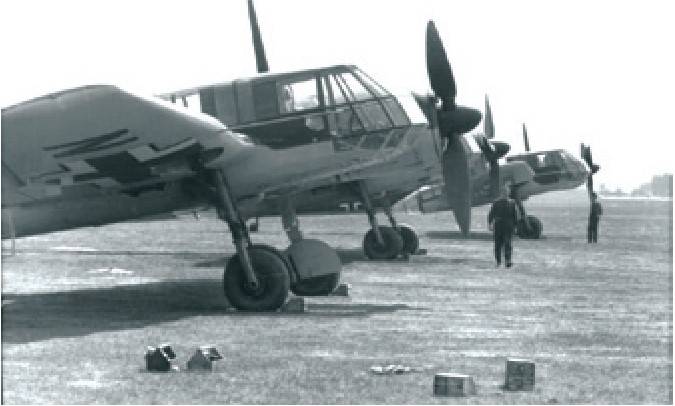
After the issuance of an order for the production of serial BV.141B aircraft, the creation of an operational unit began, which was named "Special Squadron 141" and was focused on work on the Eastern Front.
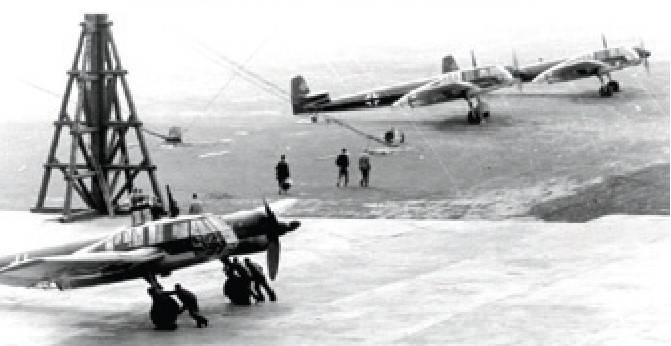
But these plans were finally abandoned in the spring of 1942 at the initiative of the General Staff. By this time it became clear that the reconnaissance missions were being performed quite successfully by the reliable two-engine Focke-Wulf Fw.189.
Of course, the suicide of Udet, who "covered" the project, and numerous minor defects of BV.141 played a role.
In addition, the allies made their contribution, having successfully bombed the Focke-Wulf factories, and after the damage to the factories, it was Blohm und Voss that gave part of the orders for the production of Fw.200 Kondop.
As a result, the entire production of BV.141 was curtailed, and the already produced aircraft remained as training and test aircraft, and did not take part in hostilities.
The plane was too peculiar. Yes, he was not bad in flight, he could well have succeeded in a further career, but ... Excessive extravagance let him down. Overall, it was a great and interesting work by Dr. Vogt.
LTH BV.141b-02
Wingspan, m: 17,42
Length, m: 13,95
Height, m: 3,60
Wing area, square m: 51,00
Weight, kg
- empty aircraft: 4 700
- normal takeoff: 5 700
Engine: 1 x BMW-801a-0 x 1560 HP from.
Maximum speed km / h
- near the ground: 366
- at height: 435
Practical range, km: 1 888
Practical ceiling, m: 10 000
Crew, person: 3
Armament:
- two fixed 7,92 mm MG-17 machine guns forward
- two 7,92 mm MG-15 machine guns on movable installations back
- 4 bombs, 50 kg each.
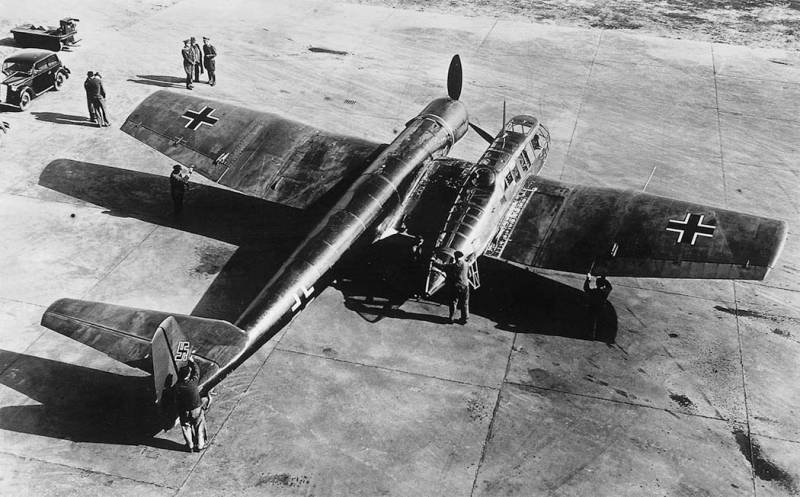
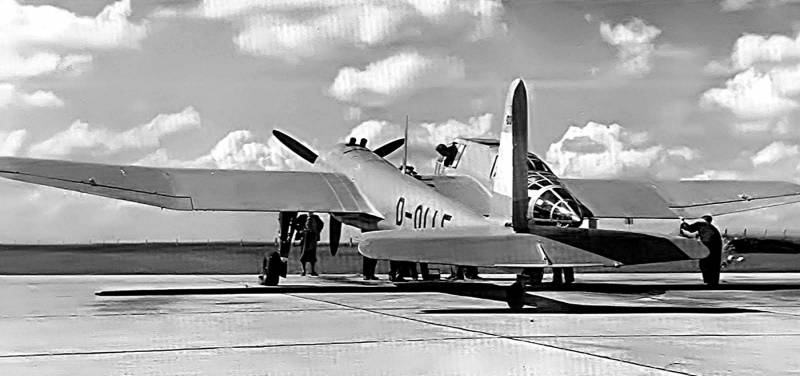
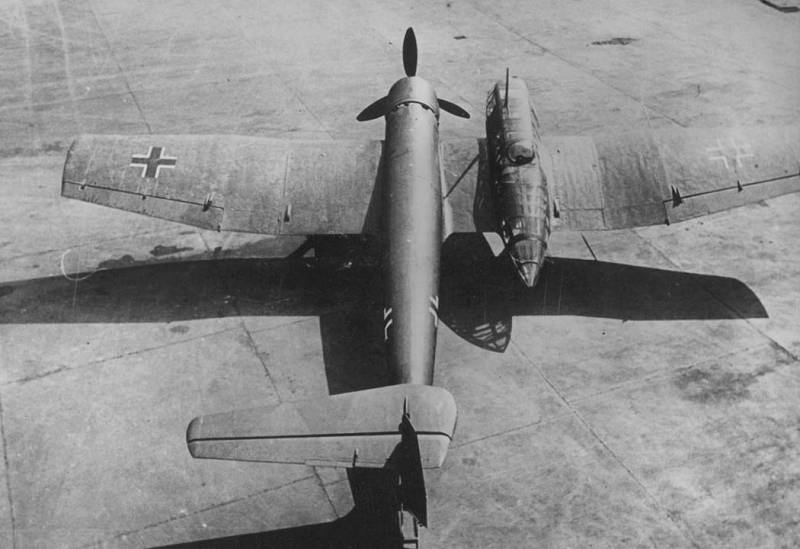
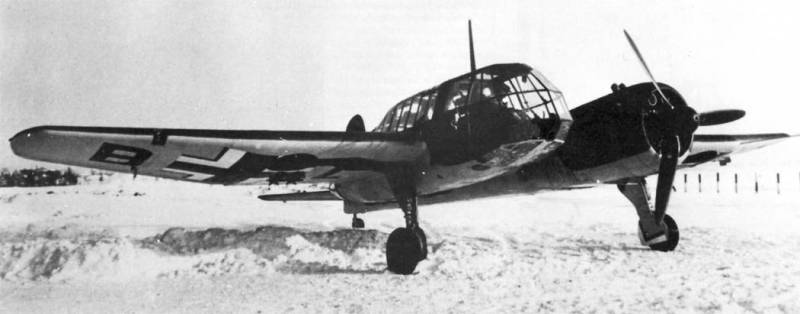
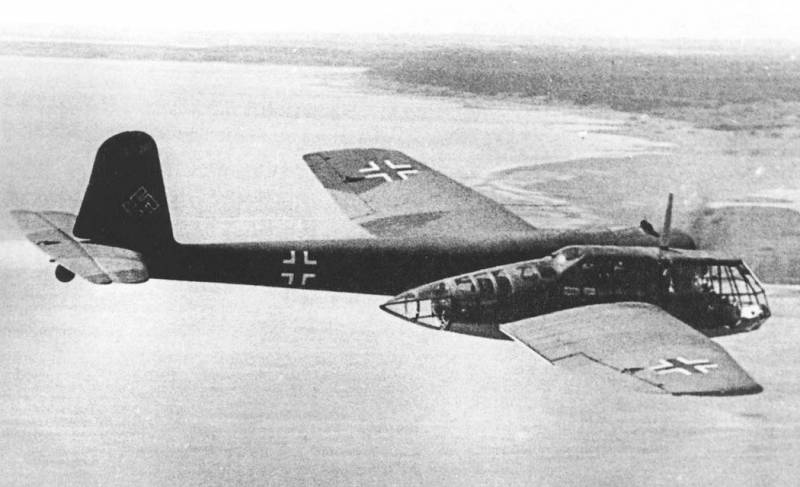
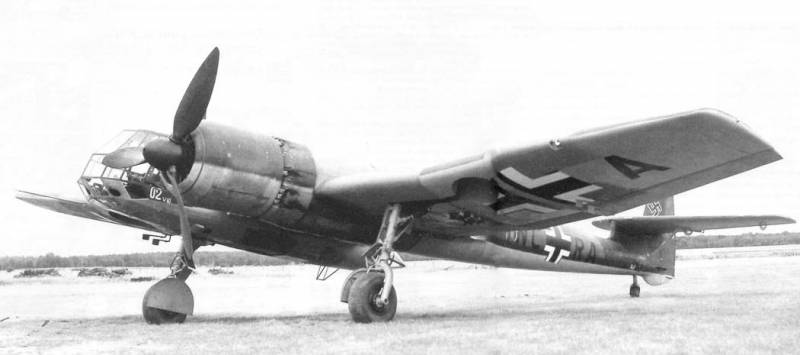
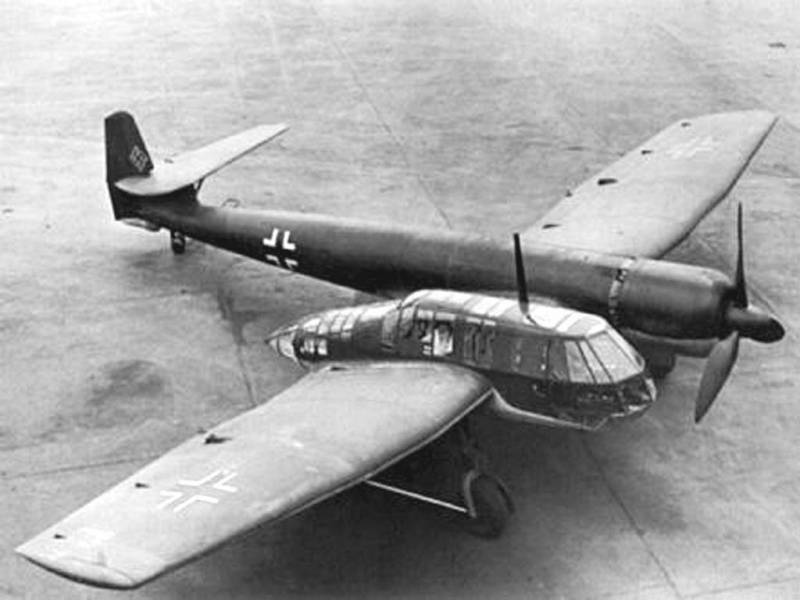
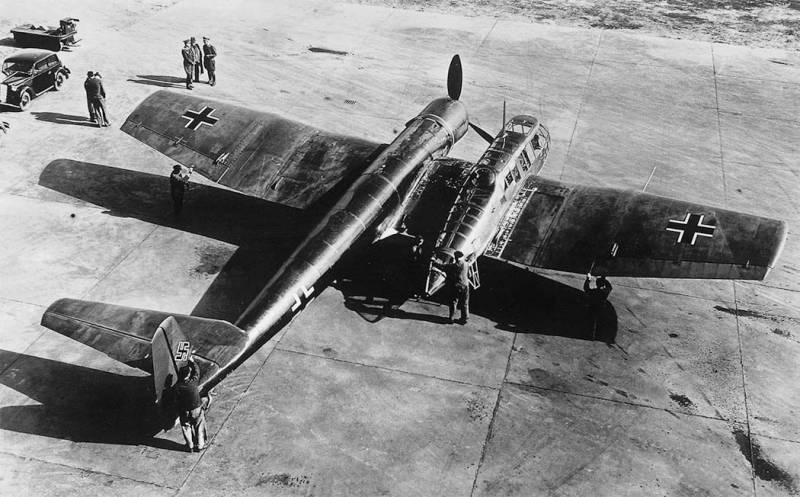
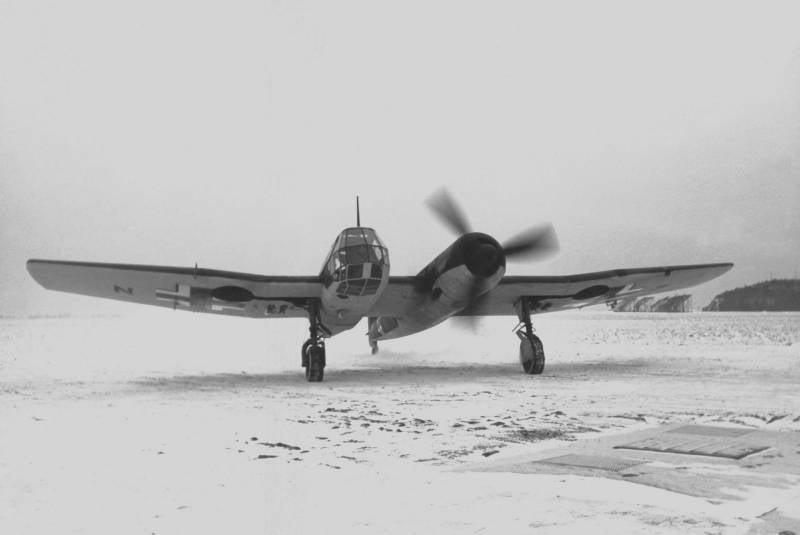
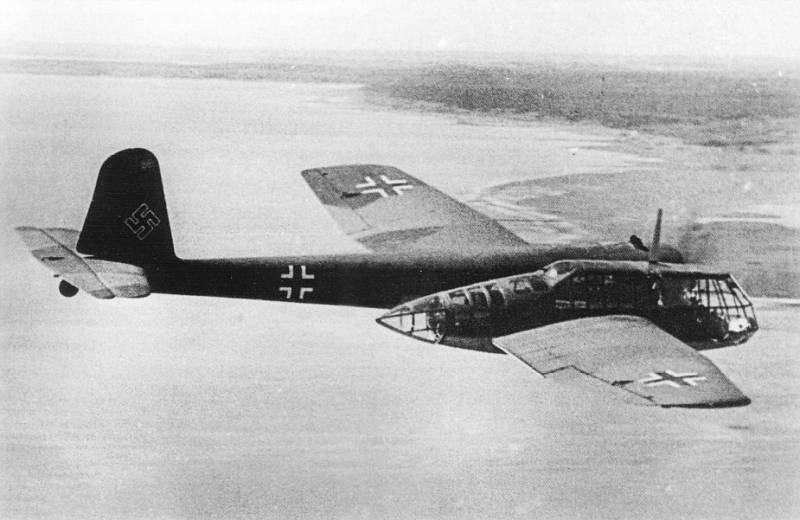
Information